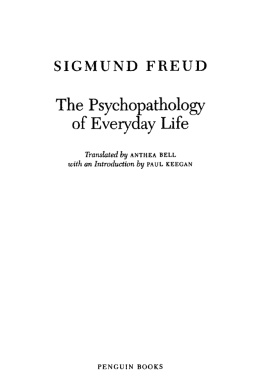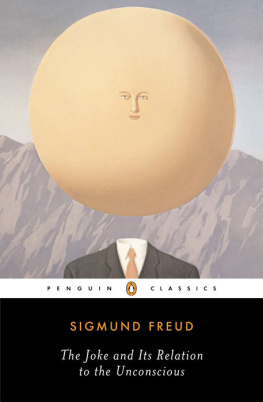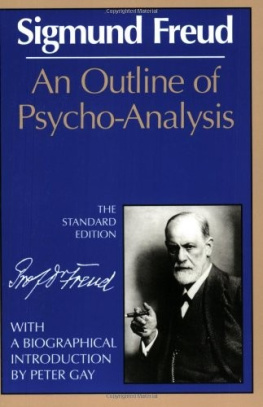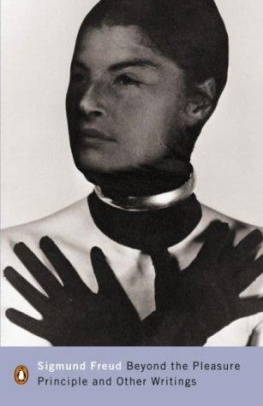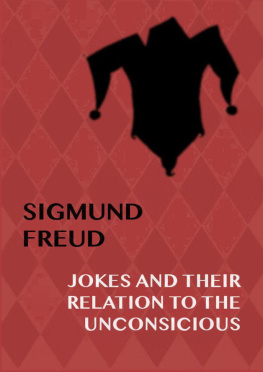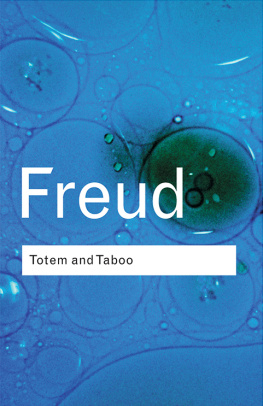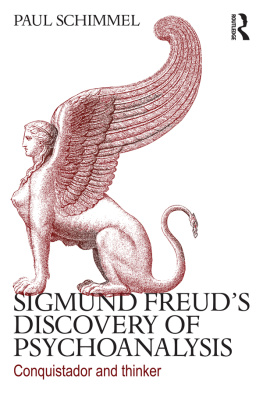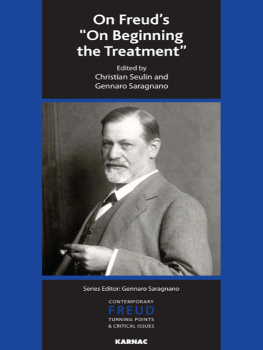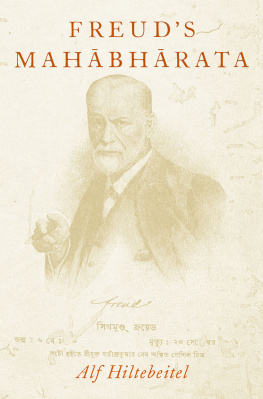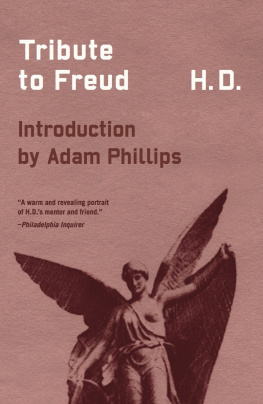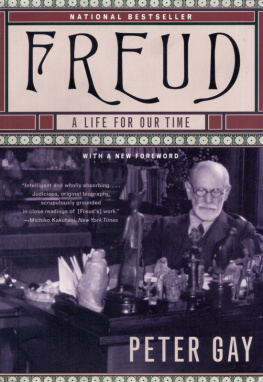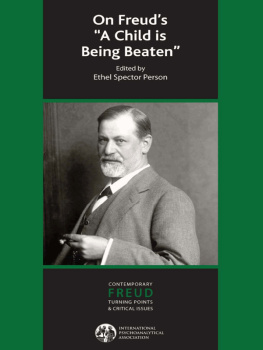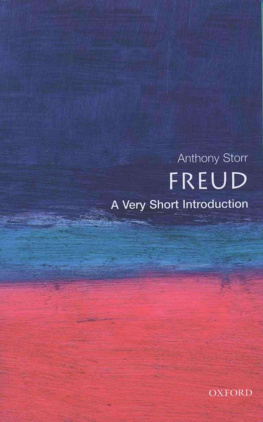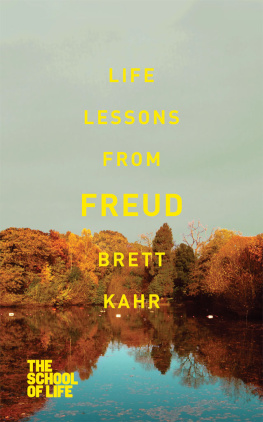Sigmund Freud - The Basic Writings of Sigmund Freud
Here you can read online Sigmund Freud - The Basic Writings of Sigmund Freud full text of the book (entire story) in english for free. Download pdf and epub, get meaning, cover and reviews about this ebook. year: 1995, publisher: Modern Library, genre: Detective and thriller. Description of the work, (preface) as well as reviews are available. Best literature library LitArk.com created for fans of good reading and offers a wide selection of genres:
Romance novel
Science fiction
Adventure
Detective
Science
History
Home and family
Prose
Art
Politics
Computer
Non-fiction
Religion
Business
Children
Humor
Choose a favorite category and find really read worthwhile books. Enjoy immersion in the world of imagination, feel the emotions of the characters or learn something new for yourself, make an fascinating discovery.

- Book:The Basic Writings of Sigmund Freud
- Author:
- Publisher:Modern Library
- Genre:
- Year:1995
- Rating:4 / 5
- Favourites:Add to favourites
- Your mark:
- 80
- 1
- 2
- 3
- 4
- 5
The Basic Writings of Sigmund Freud: summary, description and annotation
We offer to read an annotation, description, summary or preface (depends on what the author of the book "The Basic Writings of Sigmund Freud" wrote himself). If you haven't found the necessary information about the book — write in the comments, we will try to find it.
The Basic Writings of Sigmund Freud — read online for free the complete book (whole text) full work
Below is the text of the book, divided by pages. System saving the place of the last page read, allows you to conveniently read the book "The Basic Writings of Sigmund Freud" online for free, without having to search again every time where you left off. Put a bookmark, and you can go to the page where you finished reading at any time.
Font size:
Interval:
Bookmark:
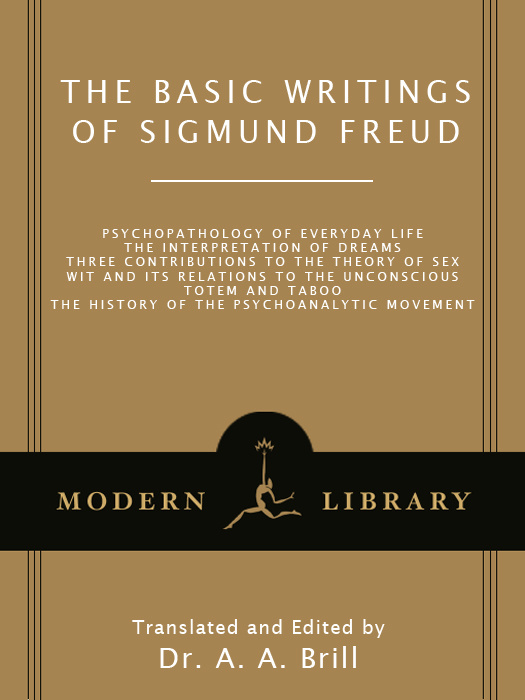
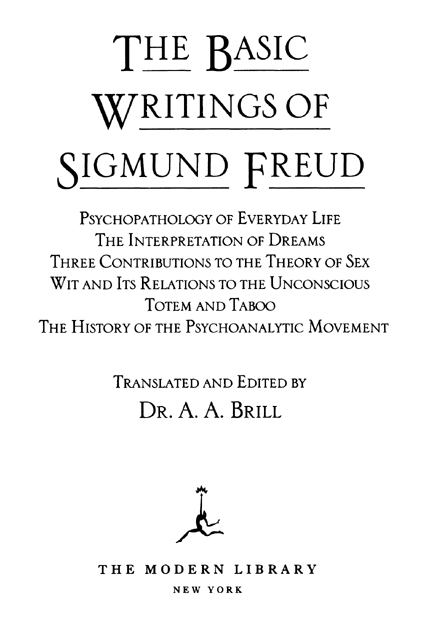
1995 Modern Library Edition
Biographical note copyright 1995 by Random House, Inc.
Copyright 1938 by Random House, Inc.
Copyright renewed 1966 by Gioia B. Bernheim and Edmund Brill
All rights reserved under International and Pan-American Copyright Conventions.
Published in the United States by Random House, Inc., New York, and simultaneously in Canada by Random House of Canada Limited, Toronto.
M ODERN L IBRARY and colophon are registered trademarks of Random House, Inc.
LIBRARY OF CONGRESS CATALOGING-IN-PUBLICATION DATA
Freud, Sigmund, 18561939.
[Selections. English. 1995]
The basic writings of Sigmund Freud/translated and edited by A. A. Brill
p. cm.
Originally published: New York: Modern Library, c. 1938. Includes index.
Contents: Psychopathology of everyday lifeThe interpretation of dreamsThree contributions to the theory of sexWit and its relations to the unconsciousTotem and tabooThe history of the psychoanalytic movement.
eISBN: 978-0-307-82401-1
1. Psychoanalysis. I. Brill, A. A. (Abraham Arden), 18741948. II. Title.
BF109.F74A25 1995
150.1952dc20 95-13411
Modern Library website address: www.modernlibrary.com
v3.1
Sigmund Freud was born on May 6, 1856, in the small Moravian town of Freiberg (now Pbor, Czechoslovakia). His father, Jacob Freud, was a struggling wool merchant; his mother, Amalia (ne Nathansohn), eventually bore seven more children. Freud also had two much older half-brothers, offspring of his fathers first marriage. When the boy was nearly four, financial difficulties forced the Freuds to move to Vienna. The young Freud proved to be a brilliant and dedicated student, regularly finishing first in his class. In my youth I felt an overpowering need to understand something of the riddles of the world in which we live and perhaps even to contribute something to their solution, he later recalled. Freud entered the University of Vienna as a medical student in 1873, at the age of seventeen and found the work in physiology and neurology so fascinating that he did not complete a degree until 1881.
The following year Freud accepted a position at the Vienna General Hospital, where he concentrated on the study of cerebral anatomy and also conducted research on the possible clinical uses of cocaine. From October 1885 to February 1886 he trained in Paris with acclaimed French neurologist Jean-Martin Charcot, who impressed Freud with his use of hypnosis in the treatment of hysteria and other nervous disorders. Returning to Vienna in the spring of 1886, Freud set up private practice as a consultant in nervous diseases and became a leading authority on the cerebral palsies of children. In September 1886 he married Martha Bernays after an engagement of four years. Within a decade the couple had six children, the youngest of whom, Anna, grew up to be her fathers confidante and disciple and later a celebrated psychoanalyst in her own right.
Freuds interest gradually shifted from neurology to psychopathology. Inspired by the work of a fatherly colleague, internist Josef Breuer, he began using hypnosis and free association in the cure of women suffering from hysteria. Studies in Hysteria, issued jointly with Breuer in 1895, documented several case historiesincluding that of Anna O., the founding patient of psychoanalysisand described the technique of transference. In addition, Freuds voluminous, fifteen-year correspondence with Berlin physician Wilhelm Fliess (published posthumously in 1950) illuminates the development of his views at this time. Especially germane is the essay Project for a Scientific Psychology originally included in letters to Fliess. Written in 1895 it represents Freuds unsuccessful attempt to state the facts of psychology in purely neurological terms. Nevertheless, the work anticipated many of his later theories, and in the spring of 1896 he introduced the term psychoanalysis. The death of his father that October prompted Freud to begin rigorous self-analysis, which culminated in the recognition of infantile sexuality and the description of the Oedipus complex.
Freud ended this period of self-described splendid isolation. He published two groundbreaking worksThe Interpretation of Dreams (1900) and Psychopathology of Everyday Life (1904)and started meeting with other physicians, including Alfred Adler, every Wednesday night in his apartment at Berggasse 19 to ponder psychoanalytic questions. The group eventually became the Vienna Psychoanalytic Society. In 1905 Freud issued two more books that further reinforced psychoanalytic thought: Three Contributions to the Theory of Sex and Wit and Its Relation to the Unconscious. The same year marked the appearance of the first of his famous case histories, Fragment of an Analysis of a Case of Hysteria, popularly known as the Dora case. He later enriched the psychoanalytic canon with Analysis of a Phobia in a Five-Year-Old Boy (Little Hans, 1909), Notes upon a Case of Obsessional Neurosis (Rat Man, 1909), Psychoanalytic Notes on an Autobiographical Account of a Case of Paranoia (Schreber case, 1911), and From the History of an Infantile Neurosis (Wolf Man, 1918). Freud also brought out papers on countless topics outside the realm of clinical specialization such as Obsessive Actions and Religious Practices (1907), Creative Writers and Daydreaming (1908), and Leonardo da Vinci and a Memory of His Childhood (1910).
As Freuds ideas circulated abroad they attracted the attention of young Swiss psychiatrist Carl Jung, whom Freud later privately named as his successor. In 1909 the two journeyed together to the United States to lecture. Their close involvement, however, created dissension within the Vienna Psychoanalytic Society; in 1911 Adler and others withdrew from the group. Differences between Freud and Jung caused a gradual estrangement. In 1914 Freud terminated their friendship, delivering a powerful polemic against both Jung and Adler in The History of the Psychoanalytic Movement. Moreover, Totem and Taboo (1913), an application of psychoanalysis to social anthropology, was viewed by some as a denunciation of Jung and other members of the movement.
Although the outbreak of World War I brought psychoanalytic activity to a virtual standstill, Freuds mind did not remain idle. Beginning in 1915 he delivered a series of lectures at the University of Vienna, hoping to familiarize a mixed audience of physicians and laymen of both sexes with the fundamentals of psychoanalysis. (Included in the audience was his daughter Anna.) They were published in 1917 as Introductory Lectures on Psychoanalysis. During the immediate postwar years, Freud wrote three short but highly influential books: Beyond the Pleasure Principle (1920), the first formulation of his theory of the death drive; Group Psychology and the Analysis of the Ego (1921), an exploration of the forces that hold social entities together; and The Ego and the Id (1923), a now classic study on the structure of the mind.
In the spring of 1923 Freud underwent the first of many operations to remove malignant tumors from his palate. Although rarely free of pain, he never stopped working. He continued to analyze patients and revise his theories. In Inhibitions, Symptoms, and Anxiety (1926) Freud reversed his earlier views on anxiety. He turned out several books that captured a wide general audience.
Font size:
Interval:
Bookmark:
Similar books «The Basic Writings of Sigmund Freud»
Look at similar books to The Basic Writings of Sigmund Freud. We have selected literature similar in name and meaning in the hope of providing readers with more options to find new, interesting, not yet read works.
Discussion, reviews of the book The Basic Writings of Sigmund Freud and just readers' own opinions. Leave your comments, write what you think about the work, its meaning or the main characters. Specify what exactly you liked and what you didn't like, and why you think so.

